The mantra I keep repeating over and over to anyone that asks about cables is that cables are as much a component as anything else in the system and can have just as much effect on the end product as any other component in the system other than the speakers (or headphones which of course are speakers). The two most critical pieces of any music reproduction system are the speakers foremost and the source. The speakers because this is the weakest link in the chain, they produce the most distortion in terms of timbre, phase linearity, phase coherency, amplitude, dynamic range, frequency response, linear bandwidth, and THD, in addition, they determine what the overall sound of the system is going to be while the other components simply tweak the sound to hopefully get the most out of the speakers. The speaker also determines the needs of the system in terms of current, voltage, damping, impedance, and capacitance. In other words, you have to carefully match the amplifier to the speaker. The reason the source is so important is simple, you can never improve upon your source, the source is as good as the sound is ever going to get and the goal of the rest of the components is to do as little damage as possible. Again, this is where system matching comes into play, mostly in the area of timbre and frequency response (you are never going to have a component that produces too little distortion and frankly there is no way to correct for it if it occurs upstream) if you have a component that has an uptick in the high frequencies or a bit edge, you can compensate with a component that is a little more musical.
Which brings us back to cables; A perfect cable would have no effect on the sound whatsoever, i.e. it would have infinite bandwidth, infinite current capacity, no impedance or capacitance, 100% phase linearity and coherence, and 100% EMF (electromagnetic field) rejection. This of course does not exist, cannot exist, so for the most part, high-end cables use various materials, manufacturing techniques, and structural designs in order to approximate this ideal.
Black Dragon Cables:
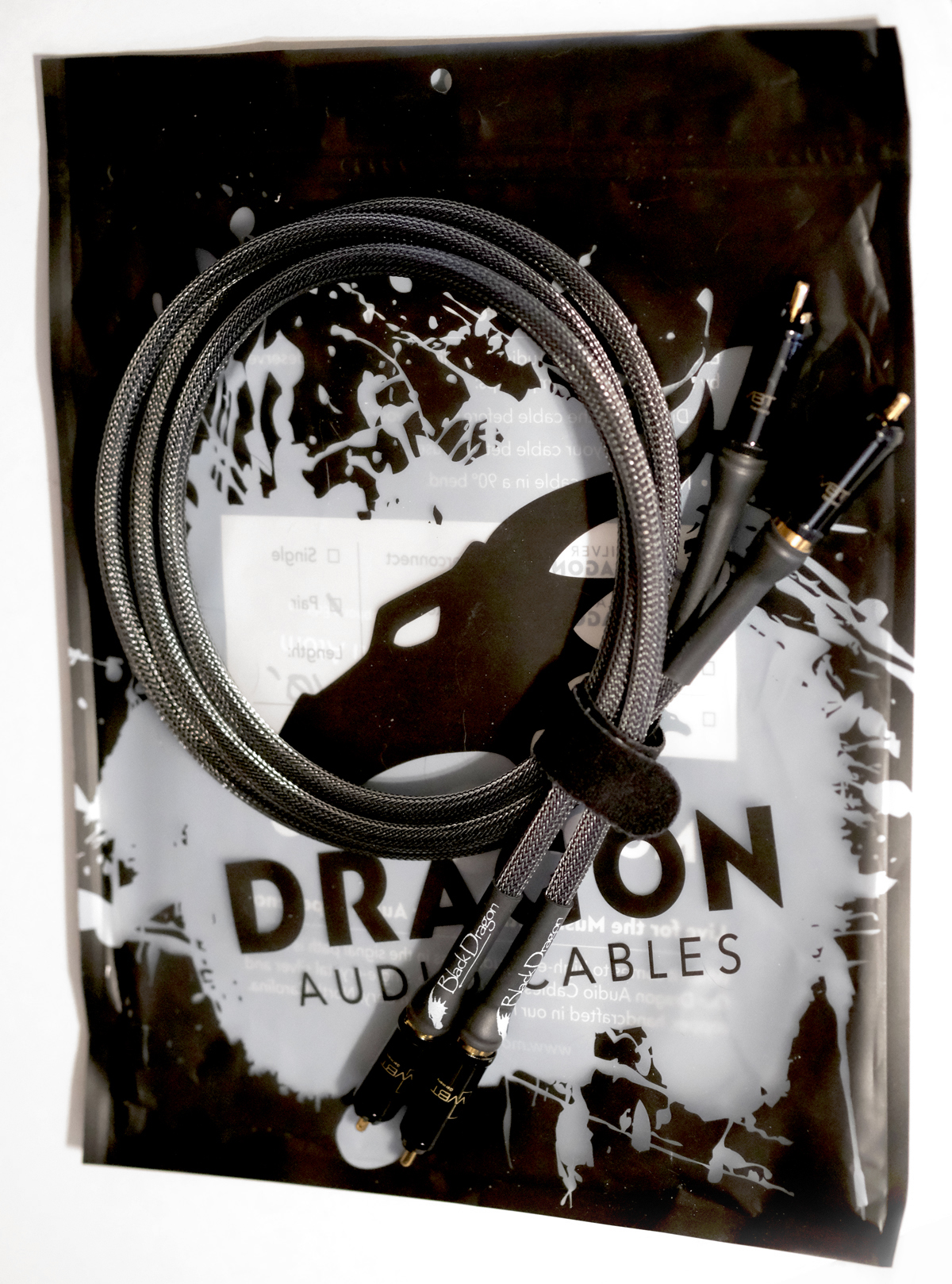
My first experience with Moon Audio’s Dragon Cables was with their Silver Dragon IEM cables (reviewed here) and their Blue Dragon Power Cables (reviewed here). This led me to choose the Black Dragon Cables for my first review for HiFiAudio.Guru which can be found here.
Though full technical details on the Black Dragon Cables used in this review can be found at the end of this review, essentially the cable is designed employing high-purity low crystalline structure copper with Teflon dielectric and double shielding over the individual wires and a further shield layer over the entire cable.
So what does this mean and how does this relate to better performing cables? Low crystalline structure copper simply refers to a process (once referred to as mono crystal but this was a bit of hyperbole) where heat and pressure are applied to copper to grow larger crystals (think of diamond vs. carbon fiber) which has been found to have greater conductivity and more stable electromagnetic properties than raw untreated copper, as does the purity of the copper in question, which naturally translates to lower impedance and capacitance while increasing current capacity, while Teflon for whatever reason has been found to be a better insulator than other materials, which again translates to lower impedance and capacitance. Phase and bandwidth are essentially a product of the gauge of the wires used reducing what is known as skin effect (which is the tendency for signals to travel at different rates over the surface of larger diameter conductors). Of course, the layers of shielding reduce the harmful effects of EMF (noise).
Bronze Dragon Cables:
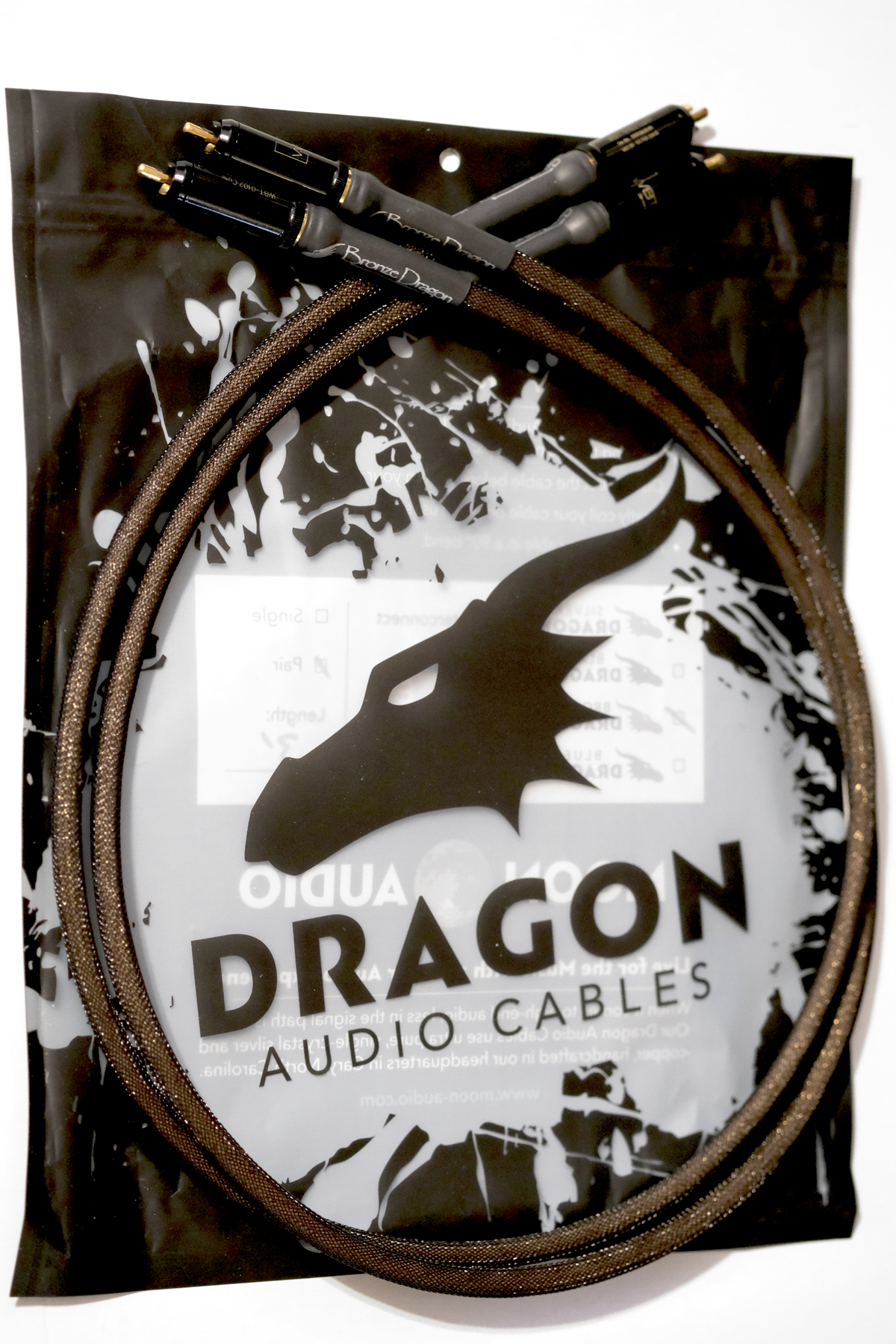
Bronze Dragon Cables are the first new cable from Moon Audio in years and the Interconnects are the first salvo of what will be a complete cable line (some headphone cables are already available HERE). To quote Drew “Our designs have a long shelf life in terms of performance. Thus why we don’t continuously come out with new cables. We try to produce the best sonic characteristic for a very fair price.” Bronze Dragon Cables are based on the design of the Silver Dragon Cables substituting an even higher purity low crystalline structure copper than used in the Black Dragon Cables for the silver used in the Silver Dragon Cables taking advantage of the tendency for copper to have a warmer more musical sound. Unlike the Black Dragon Cable, the Bronze Dragon Cables employ eight solid core conductors of extremely small diameter, individually Teflon insulated and woven in a braided geometry which by its nature is a shield in itself and designed to increase conductivity while maintaining bandwidth and phase coherency.
The Sound Checks:
This review began life as a system review of my current reference system using the Brodmann Acoustics Festival FS Loudspeaker while exploring the differences between the Black Dragon and Bronze Dragon Cables but the speaker was unfortunately discontinued so while the speaker still makes up a part of the overall sound, we’ll be focusing on the cables.
I learned long ago that it is often much more noticeable when you remove a system component than when you add it, so I began with the Bronze Dragon Interconnect in place.
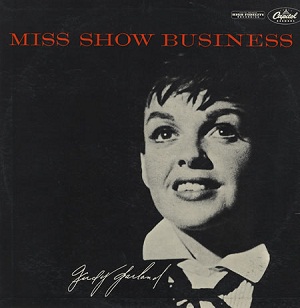
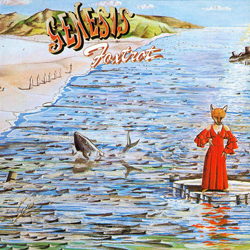
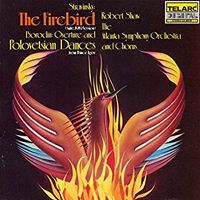

After dialing in the speakers (which are a bit finicky about placement) using my usual test tracks (I use Judy Garland’s 24-bit/96kHz mono recording of “Over the Rainbow” from “Miss Show Business” to focus the soundstage and adjust depth of field, “Can-utility And The Coastliners” from a DSD recording of “Foxtrot” by Genesis to gauge timbre and tonal balance focusing on sub-bass response, and my 24-bit/96kHz rip of the Robert Shaw conducting the Atlanta Symphony Orchestra’s performance of Stravinsky’s “The Firebird Suite” from “Stravinsky: The Firebird; Borodin: Music from Prince Igor” to finalize the depth and width of the soundstage.)

I launched Qobuz and selected Frank Sinatra’s “Watertown (2022 Mix)” (“Watertown (Deluxe Edition/2022 Mix)” 24-bit/192kHz – Qobuz). The song begins with bass guitar center stage about 5 feet away from you, with the piano cutting in on the left about 5 feet behind and 3 feet outside the left speaker, and a guitar pick click and the drums slightly right of center, and the orchestra behind creating a panoramic soundstage. Frank stands just behind the speakers in what appears to be a large Las Vegas dinner theatre. The timbre of the instruments is incredibly realistic, with massive amounts of air around them. The extreme detail is apparent as more and more instruments cut in creating a tapestry of sound.
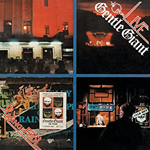
The next track I put on was “Just The Same (Radio Session 1975)” from Gentle Giant’s “Playing the Fool” (16-bit/44.1kHz – Qobuz). It was an in-studio experience with a vast sense of space, the percussive atonal dynamic jumble of instruments that is the Gentle Giant sound rendered against a black backdrop. Sharp, stark, abrupt, and high energy yet still musical.
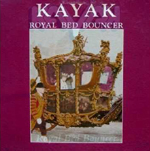
I followed this up with Kayak’s “Royal Bed Bouncer” (“Royal Bed Bouncer” – 24-bit/44.1kHz – Qobuz). The lightning paced piano was rich, delicate, and dynamic with that same sense of three-dimensionality beyond the boundaries of the speakers.
I finished off the session with a full listening of “The Firebird Suite” which gave me Promenade 1 seating at the Hollywood Bowl, wide, deep, full, with the timbre of the individual instruments finely delineated, giving each its own individual character, the tympanis quick and dynamic, the oboe, flute, English horn, clarinet, and violin each singing gently as they wove together in a complex call and response drawing up images of delicate fey in the mind’s eye.
Now was time to swap out for the Black Dragon interconnects (note only the interconnects were changed, the rest of the cabling was all Black Dragon throughout testing) and repeat the listening tests (though I did them in reverse order). The difference was immediately noticeable. The soundstage with the Bronze Dragon Cables was more spacious, more enveloping and the detail and resolution especially with the higher resolution tracks were more minute, textured, and palpable. On the other hand, the high frequencies of the Black Dragon cables were a bit warmer, a bit more musical.
The Conclusions:
Overall, whether using the full Black Dragon Cable complement or with the Bronze Dragon Cables in place, this system was a spectacular success if a little light on the bottom end due to the speakers rolling off at 55Hz fairly sharply due to their size. There is no question that people upgrading from the Black Dragon Cable to the Bronze Dragon Cable are going to see a noticeable increase in soundstage, dynamics, and involvement in the music while maintaining exceptional musicality, and the Bronze Dragons represent a wonderful midpoint between the Black Dragon Cable and the Silver Dragon Cable. It should also be noted that with a brighter speaker like the Brodmann Acoustics Festival FS Loudspeaker the Black Dragon Cable remain the more musical choice though with a warmer speaker the Bronze Dragon Cables have a clear advantage. It should not go unsaid that those seeking the ultimate in detail and lifelikeness the Silver Dragon Cable definitely deserves an audition. For me, depending on the speaker involved, either the Bronze Dragon or the Black Dragon will always remain my first pick.
Manufacturer’s Webpage: https://www.moon-audio.com/dragon-audio-cables.html
The System:
The technical details on the cables used in this review are as follows:
Black Dragon Interconnects 3’ RCA $500:
Black Dragon Interconnect strandings are all 99.9998% high-quality low crystalline structure pure UPOCC copper. Each conductor is 21.5awg in size with a double shield by both a foil and 100% multidirectional braided wire shield using Teflon coating. As an extra layer of noise protection (the geometry being one guard against unwanted outside noise interference) a copper 100% shield coverage is added with a Techflex outer jacket. Connectors – WBT Nextgen RCAs

Bronze Dragon Interconnects 3’ XLR $550:
Bronze Dragon Interconnect uses the same eight-wire braided geometry found in Silver Dragon Interconnect, but with solid-core UP-OCC 99.99998% pure copper 26 AWG Teflon insulated wire. The braided geometry itself acts as a noise rejection barrier, and an external shield is also added. Connectors – WBT Nextgen RCAs

Black Dragon V1 Speaker cables 10’ $670:
Black Dragon V1 Speaker Cables employ a new geometry, using a special stranded grouping. The copper strandings are all 99.9999% high-quality, low crystalline structure, pure copper. There are 4x11awg conductors. A standard run will yield approximately 2x6awg conductors, and a bi-wire set which uses an internal bi-wire design will yield 4x11awg conductors. As with the other cables a Teflon coating is chosen along with a Techflex outer jacket.
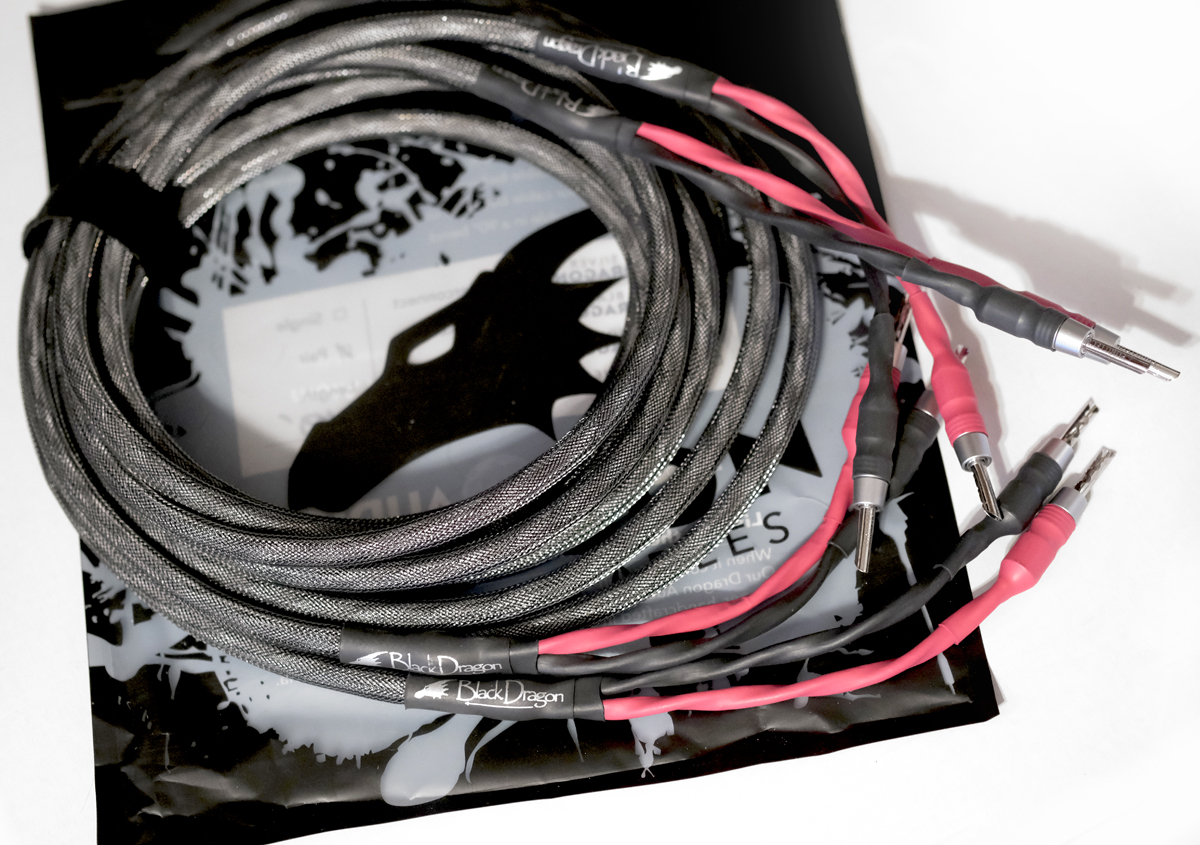
Black Dragon V1 Power cable 6’ $480:
Black Dragon V1 Power cables contain 4-11Awg Stranded high purity slow drawn Copper conductors per cable in a star Quad configuration. Each conductor is made up with a special selection of stranding sizes, 2 for the positive and 2 for the negative, this yields an 8awg total size per signal polarity All conductors are individually wrapped in Teflon, and the 4 conductors are then twisted together and Teflon taped as well. The cable has a single 100% coverage shield which is covered in 2 layers of Techflex braiding for added protection and good looks. Furutech FI-28 Rhodium 15A/125V connectors are used which employ Rhodium-plated Alpha Copper conductors.

Black Dragon USB cable 6’ $195:
Black Dragon USB cable utilizes 99.999% pure single crystal UP-OCC copper construction employing 24AWG Teflon insulated stranded copper conductors with a double layer shield to ward off outside interference and provide the best possible digital bus transmission.

Brodmann Acoustics Festival FS Loudspeaker:

For those unfamiliar with the Brodmann Acoustics name, they are a spinoff of Joseph Brodmann Pianos, a well-established and respected Austrian piano manufacturer (they made pianos for Ludwig van Beethoven). As one can imagine, a maker of musical instruments, especially ones as sophisticated as concert grand pianos, has a certain advantage in the design and manufacture of speakers with their inherent understanding of resonance and acoustics. Speaker designer Hans Deutsch, an acoustical engineer, has taken a unique approach to speaker design, rather than damping out all acoustic resonance as in a conventional speaker, he employs resonance via tunable soundboards to create a more natural sound much like the original musical instruments being reproduced. Hence the Brodmann Acoustics Festival FS Loudspeaker is much different in appearance than your usual speaker. Only the tweeter faces forward towards the listener, the midrange/woofer is on the side of the cabinet facing outwards creating a much larger soundstage than produced by conventional speakers. The speaker and stand lock into each other with the speaker grill traversing the entire side of the stand/speaker combination in order to fully isolate the speaker from the floor.
In appearance, the Festival FS is extremely elegant having a fairly slim silhouette being only a little wider than the tweeter itself, and the pair I received are in a luxurious glossy piano black making the pretty much disappear into the room both physically as well as sonically.
Set up takes a bit of effort as they are designed to interact with the room but the result is well worth it. In my setup, they preferred the live end of the room as opposed to the dead end which while surprising makes a certain amount of sense as reflection accounts for a good bit of the sound. For me, having the speaker off-axis, with the cross point slightly in front of me where the sides of the speaker were just visible proved to be the best configuration.
Manufacturer’s Websites: www.avluxint.com www.brodmann.at
Price: (Discontinued)
Frequency Range: 55 – 20,000 Hz ±3 dB
Acoustical Active 130 Hz – 4.5 dB/oct
Electrical 2.0 kHz – 6 dB/oct
Operational Output: 1.9 Watt for 91 dB/m
Nominal Load: 40 Watt
Music Load: 80 Watt
Nominal Impedance: 8 Ohm
Dimensions (H x W x D): 952 x 202 x 276 mm
Weight: 10 kg
LSA VT-70 Tube Integrated Stereo Amplifier/Headphone Amplifier:
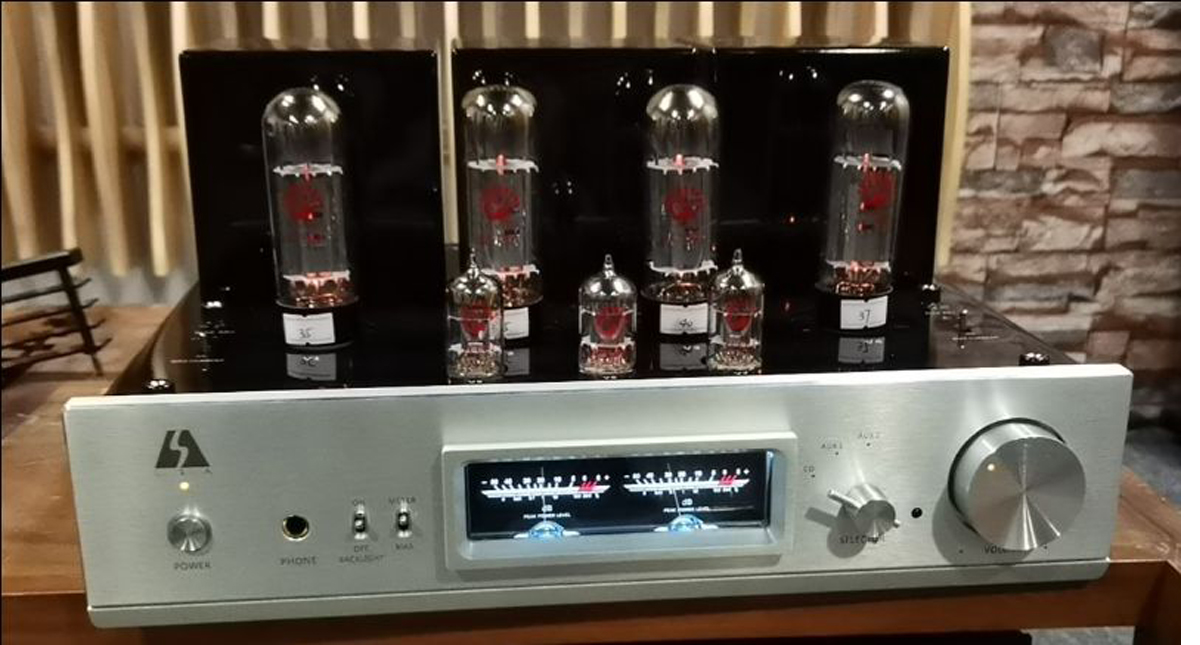
The LSA VT-70 Tube Integrated Stereo Amplifier/Headphone Amplifier is a classic Ultralinear Class AB 35 Watt per channel tube amp, featuring four EL34 tubes (that can be upgraded to 6550s or KT88s) with a pair of 12AU7s and one 12AX7 on the front end. A quick look inside shows that it is a blend of old vs. new with a balance of modern circuit boards and point-to-point wiring, which has the advantage of reducing production costs while maintaining sonic integrity, which is why the VT-70 can be offered at a fraction of the cost of other similar designs.
Appearance-wise it is simply gorgeous, with a piano black chassis, transformer covers, and tube cage, and a brushed aluminum faceplate and knobs, alongside chromed toggle switches, plus dual VU meters set in the center. Secured by banana plug style fasteners, the tube cage is easily removed to reveal ceramic tube sockets and the easily accessible bias adjustments. To make tube rolling a breeze, the VU meters double as bias adjustment meters as well as power meters. The tubes included in my unit were LSA branded so I cannot speak as to their provenance, but swapping out for NOS tubes of your choice can only make a great thing better. Thanks to Frank Iacone, I was able to swap out the EL34s for a set of Gold Lion Genalex KT88s and do this follow-up review.
For layout, on the front panel you have (left to right facing the front panel) the power button (with a power LED directly above), a ¼” TRS headphone jack, a backlight switch (On/Off), a meter switch (Meter [VU]/Bias), the VU meters, the Selector knob (CD/Aux 1/Aux 2) which interestingly has a metal bar through it as indicator, the IR receiver, and the Volume control (with an LED inset as indicator). On the top, you have the three input tubes in the front row, then the power tubes behind that with the bias meter switches and ports to reach the bias controls to the right and left of those, and in the back the three transformer blocks. On the back (left to right facing the rear panel) you have the three single-ended RCA inputs (CD, Aux 1, Aux 2), the single-ended RCA preamp output (note: this is meant for use with a self-amplified subwoofer with its own built-in crossover, there is no crossover and the VT-70 is not meant to be used as a preamp and needs to be connected to speakers or headphones while in operation.), the speaker outputs (five-way binding posts with separate taps for 8 Ω or 4Ω, a 110/220 input voltage switch, and the power receptacle. For accessories, the VT-70 includes a remote control with a metal housing (volume and mute only).
Manufacturer’s Website: https://www.underwoodhifi.com/products/lsa-amplifiers
Price: $1,199 (introductory price, regular $1,399)
Specifications:
Power Output: 35W + 35W (RMS 8 ohm)
Ultralinear design, Class A/B,
THD: 1% (1kHZ),
Frequency Response: 20Hz-40kHz,
Input Sensitivity: 200mV,
Input Impedance: 100k Ohm,
Output Impedance: 4 ohm, 8 ohm,
S/N Ratio: 88dB,
G.W shipped: 48 pounds
Amp weight 46 pounds
Power Consumption: 230W,
Tubes used: 12AX7*1, 12AU7*2, EL34*4, (can be used KT88 or 6550 as well)
Size: 14.75″w x 8.85″h x 11.5″d
2 year warranty and 6 months on tubes
Audio-gd R2R-1 FPGA PCM/DSD DAC:
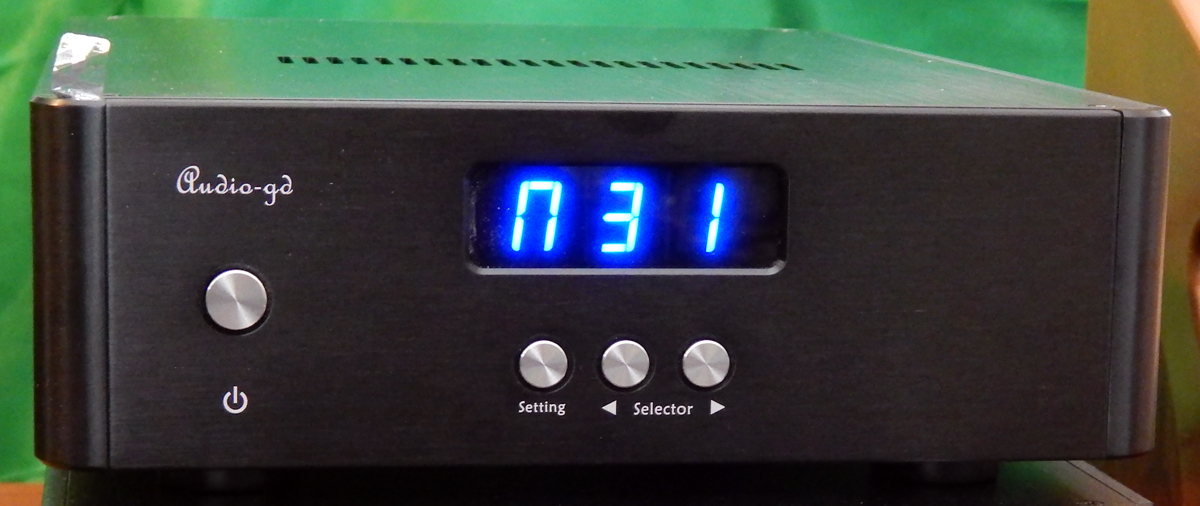
To get to the nuts and bolts of the Audio-gd R2R-1 I’ll quote from the Underwood HiFi page directly: “The R1 is an R2R full discrete DAC that uses 8 groups fully discrete R-2R DA modules to combine into a real balanced push/pull decoder. it also uses 4 group fully discrete real balanced DSD native decoders. It uses a fully discrete real balanced current transmission design. Jitter is kept ultra-low by using dual ultra-high frequency 90/98 MHz Accusilicon 318B femtosecond clocks to a provide synchronous clock for the whole unit without using a PLL up-frequency. The R1 works up to 32bit/384K with DSD512 asynchronous USB transfer thru the Amanero 384 FPGA synchronous clock. The entire whole digital circuit is built with a single FPGA and 5 CPLD programmable chipsets to separate the different configured circuits to avoid interrupting the data stream process in parallel mode. The unit supports firmware updates for future sound quality updates and all digital process mode settings are accessible by buttons on the front. In an R2R ladder DAC the unit switches resistors in parallel mode. An ultra-fast FPGA controls and corrects the R2R ladder. This parallel design mode controls every bit respectively and therefore achieves unprecedented performance. In parallel mode, only 1 clock cycle is needed to output all the data so sonics are improved and the output is more analog-like. After the D/A conversion by the R2R D/A modules, the analog signal is transported by fully discrete matched-transistor output stages. The R1 DAC uses high-quality low noise, low flux leakage, R-cores transformers to supply all digital parts and the left and right analog boards. There are in total 13 ultra-high speed and ultra-low noise power supplies built-in and double stage PSU technologies are used to remove power supply voltage fluctuations.”
Because of the complexity of the issues involved I am going to further quote from Audio-gd’s page on the R2R-1 (only correcting for the occasional grammatical hiccup) rather than paraphrase: “Accuracy of the ladder resistors (tolerance):
Many people believe the tolerance of the resistors in the ladder is most important to reach best performance. Nowadays 24 bit resolution is standard. What tolerance is needed to achieve 24-bit resolution?
When we look at 16-bit the tolerance of 1/66536, 0.1% (1/1000) is by far not enough, even a tolerance of 0.01% (1/10000), the best tolerance available in the world today, still cannot handle a 16-bit request correctly; we are not even calculating 24-bit here!
The tolerance of the resistor will never solve the Imperfections of a ladder. This would require resistors with a tolerance of 0.00001% to handle 24-bit resolution. Even this is only in theory because the discreteness of the switch logic chips already have too much internal impedance that will destroy the impossible tolerance of the resistor.
The solution is to correct the ladder and not only depend on the tolerance of resistors. It’s a combination of both: Ultra-low tolerance resistors controlled by a correction technology using a very high-speed FPGA are critical to our design.
The Importance of the FPGA in the R2R 1:
The internal hardware design is fully controlled by complex software. A huge advantage to this is the fact that the software in the FPGA can easily be upgraded offering new features or improvements to the performance. Such design is very flexible and future proof!
FPGA tasks in the R2R 1:
The FPGA in the R2R 1 is responsible for:
1. High-performance SPDIF interface, replacing traditional poor-performing SPDIF interface chips like DIR9001, WM8805, or AK411X, etc.
2. Full re-clocking process with FIFO design applicable on all inputs. This way the output data keeps fully synchronized with the clock signal to reject any jitter.
3. Built-in 2X, 4X, and 8X oversampling and digital filters, and on top of this 4 different true NOS (nonoversampling) modes (only analog 6dB filtering). Allowing you to completely configure it to your liking!
Fully discrete real balanced output stages:
The signal’s last stage is the analog output stages, which can very much affect the whole DAC sound quality.
After D/A conversion by the R-2R D/A modules, the analog signal is transported by fully discrete matched-transistor output stages employing a DC-coupled design with first-class through-hole components. No SMD (Surface Mount Devices) components are applied. The high-speed special ACSS output stages are non-feedback and current-driven design.
This is special because almost all other designs need to convert the signal multiple times from and to current or voltage, resulting in less detail and poorer staging.
The output buffers are single-ended FET with two stages in parallel to reach a very low output impedance. All output stages are pure Class A design without any (negative) feedback to achieve the purest realistic live sound reproduction.
The 4 OPA opamps are functioning as DC servo, this way no coupling-capacitors are needed, and the DC output is automatically biased resulting in a perfectly neutral sound.
There are no relays or other switches in the signal path after the DA modules to ensure the best and purest sound quality.
Heavy multiple power supplies design:
The DAC uses high-quality low noise, low flux leakage, R-cores transformers to supply all digital parts and the left and right analog boards.
There are in total 13 group ultra-high speed and ultra-low noise PSUs built-in employing double-stage PSU technology to remove power interrupts, providing cleaner power supply.”
The chassis design is milled aluminum (black) with rolled corners, long rather than wide (W 240mm X L360mm X H80mm) with a good-sized fluorescent display on the front panel bounded by three push buttons (aluminum) underneath (Setting, Selector Left/Right) and the power button to the left. Like the NFB-1 the rear panel offers a dual mono design with the outputs on the outside and the inputs in the middle. For outputs, you have standard three-pin XLR Balanced, RCA Single-Ended, and three-pin mini-XLR CAST (Current (Mode) Audio Signal Transmission ) ACSS. (Note: when looking from the rear, left and right are reversed, the same is true for the NFB-1, this is because right and left are oriented for amplifier/speaker configurations which would be aligned from the front.) To the right of the Right Input is the Update Port (using a ten-pin connector), IN4 (RCA & BNC SPDIF), IN3 (TOSLINK Optical SPDIF), IN2 (HDMI), and IN1 (USB), with the power socket in the center under the inputs.
The front Display shows 3 characters. On the right is a number (1-4) indicating which input is selected by hitting the “Selector” right or left buttons. On the left is the Oversampling indicator selectable by pushing “Setting” then either “Selector” buttons and indicates “N” for non-oversampling and “O” for oversampling. When in Oversampling mode, the center indicates the number of times oversampling (2,4,8) and is changed by hitting the “Setting” button until it is flashing and then using the “Selector” buttons to choose. When in Non-Oversampling mode the center displays your choice of three filter settings (there is no documentation as to the nature of these filters other than to say to give them a try to determine your personal preference).
Price:$1,199
Manufacturer’s Website: https://www.underwoodhifi.com/products/audio-gd
Specifications:
| S/N Ratio | >110DB | |
Output impedance | <10 ohm (RCA/ XLR) | |
Output Level | 2.5V (RCA) 5V (XLR) 2MA+2MA (ACSS) | |
| Frequency Response | 20Hz – 20KHz (< – 0.5DB) | |
| THD | <0.003% (20Hz-20KHz, Non-Weight) | |
| Input Sensitivity | 0.5 Vp-p ( 75 Ohms, Coaxial ) 19 dBm (Optical) USB1.0 – USB3.0 | |
Support Operate Systems (USB) | Windows, OSX, Linux, ISO | |
| Support Sampling | USB mode and HDMI: 44.1kHz – 384kHz /32Bit USB mode and HDMI: DSD64-256 Coaxial mode: 44.1kHz – 192kHz /24Bit Optical mode: 44.1kHz – 96kHz /24Bit | |
| Power Requirement | Version 1: 100-120V AC 50/60 Hz Version 2: 220-240V AC 50/60 Hz | |
| Power Consumption | 19W | |
| Package Weight | Approximately 5KG | |
Dimensions | W240 X L360 X H80 (MM, Fully aluminium ) | |
| Accessories | AC power cord X1 USB cable X1 |
The Core Power Technologies AV Equi=Core 1000:
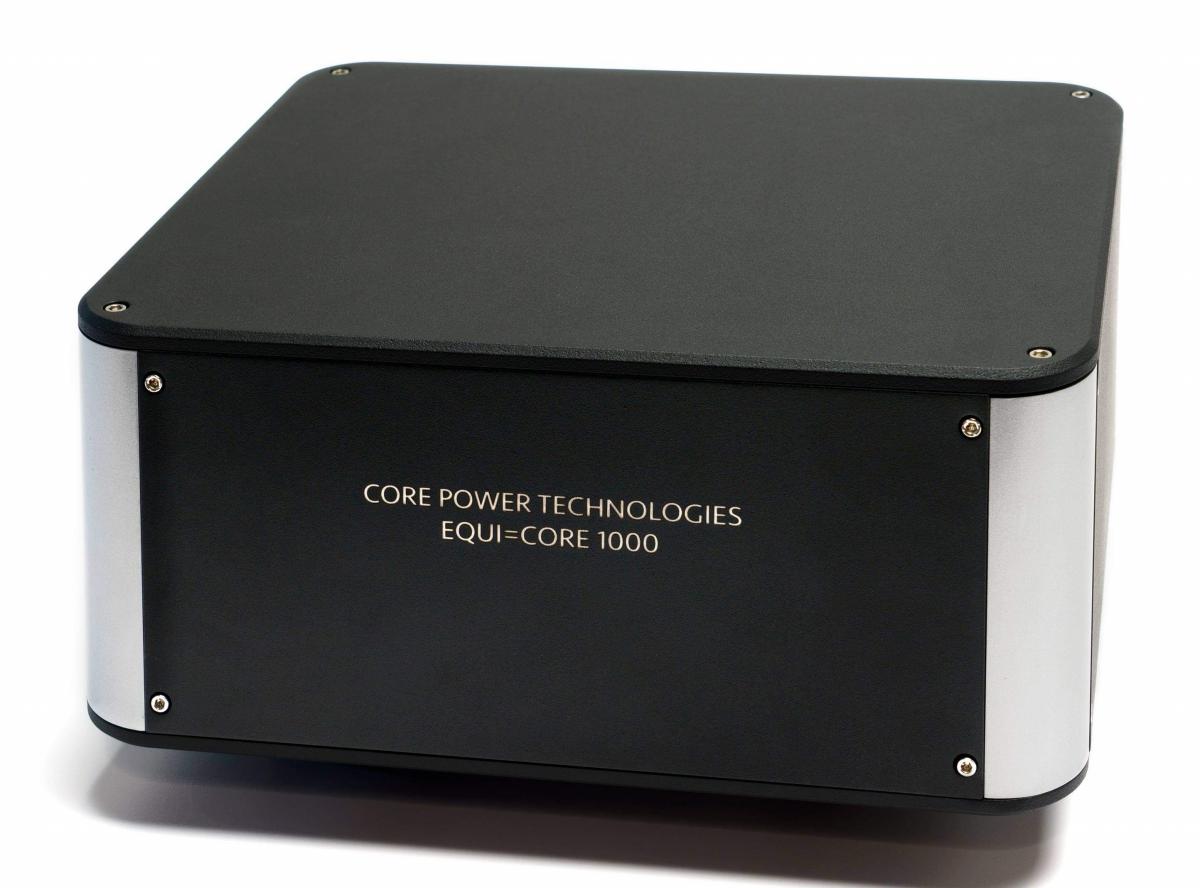
First thing you will notice about the Core Power Technologies AV Equi=Core 1000 is that it is not light, 32lbs to be precise. The chassis is made up of 10 discrete pieces of 6061 aluminum, a flat top and bottom panel with rounded corners and edges, flat front, back, and side panels (2) held together by four curved corner pieces using countersunk Allen head bolts. The brushed aluminum corner pieces create a striking contrast to the dark grey anodized faces. On the back panel, you will find 3 red Hubbell-style duplexes (a total of six outlets), a lighted power switch, the power input receptacle, and a reset button. All in all, a rather elegant attractive package. The review unit I received came with the optional Core Power Cables Valiant Gold Power Cord, there is also an option for Gold Plated Copper Duplexes but I don’t believe the one I received was fitted with them. The Equi=Core 1000 is rated as an 8.5 amp, 1000 watt, balanced line conditioner with built-in surge protection.
Price: $999 (introductory special, $1,495 MSRP)
Manufacturer’s Website: https://www.underwoodhifi.com/products/equicore














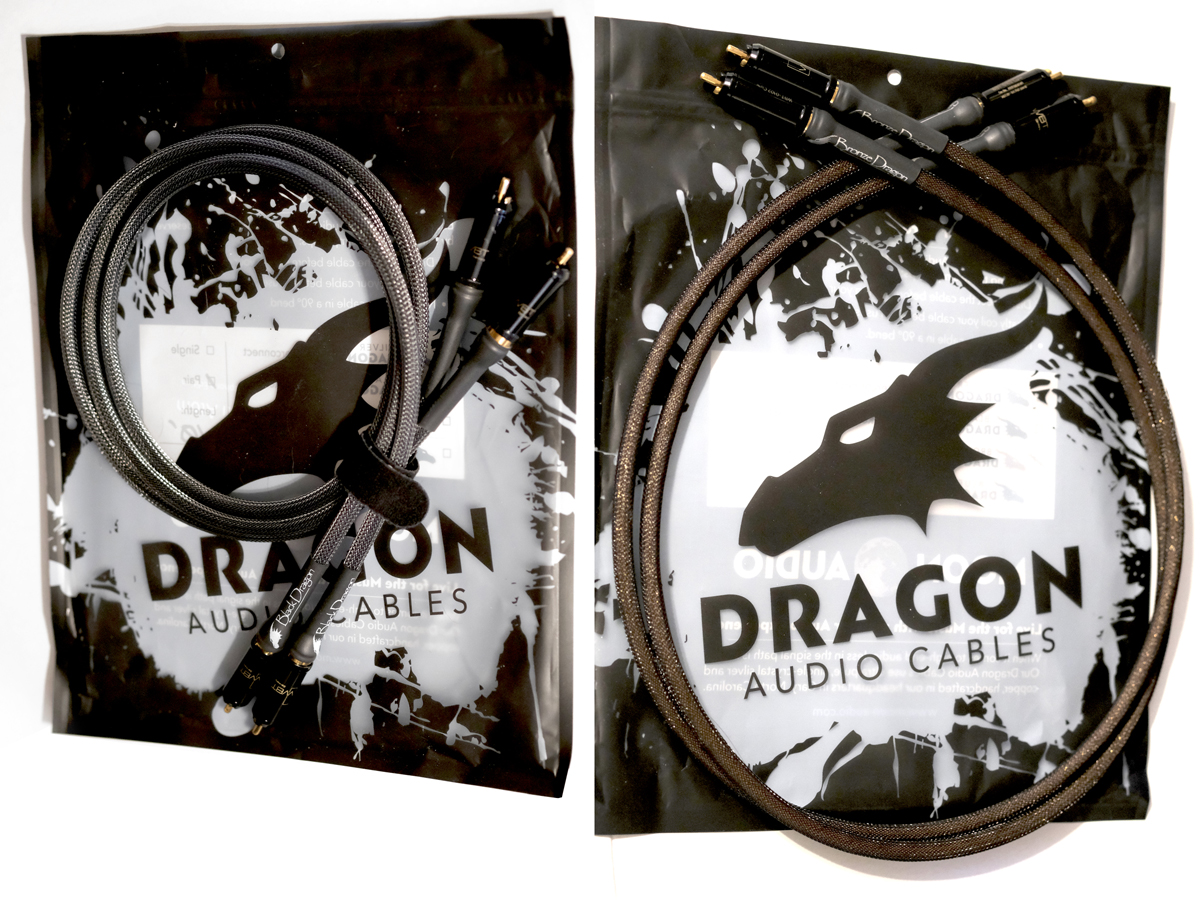
Want to join discussion?
Feel free to contribute!